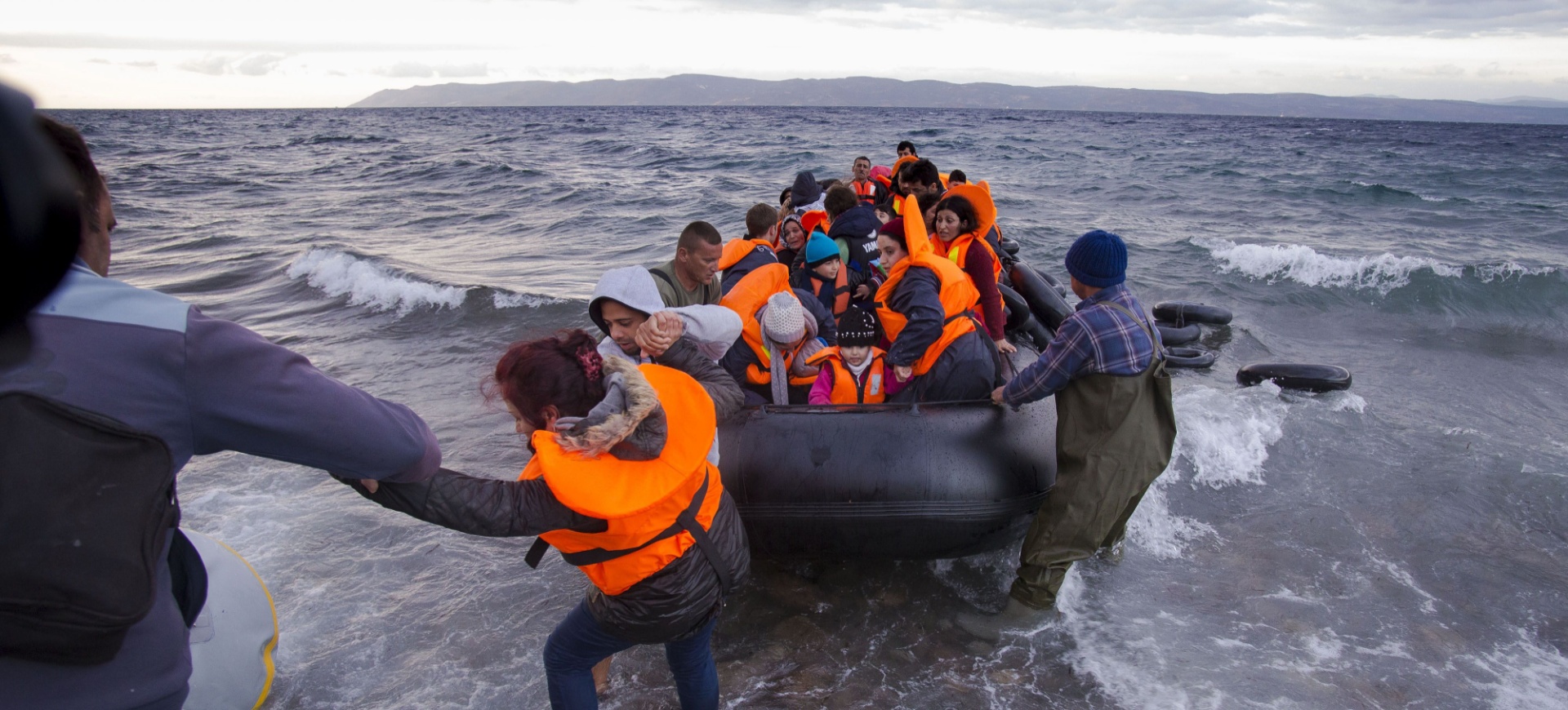Peacekeeping is an investment
The institutions created after the Second World War to keep the peace are not functioning, and if divisions are not reversed, the number of refugees and displaced people will continue to rise
How much have the needs of refugees and displaced persons grown in recent years?
Our last estimate was 114 million refugees and displaced people. This dramatic figure has doubled recently because of conflicts, violence and human rights violations, combined with other factors.
The very frequent crises are resulting in refugee movements, across Africa, the Middle East, Asia, Latin America and Ukraine. Last year, my organisation – the United Nations High Commission for Refugees – declared more than 40 refugee emergencies. This is the greatest challenge, particularly in Africa, where responding to emergencies is often difficult, dangerous and costly.
We are also witnessing increasing trafficking and smuggling, preying on the misery of people who are in dire conditions and move along dangerous routes through deserts and across seas. Other people travelling these routes may be moving for other reasons, such as economic ones. The result is arrivals are more complex to manage from every point of view: legal, logistical and social and, as a consequence, there is much political manipulation. It gets votes to say ‘these people are stealing jobs, threatening security and overturning values, so the only response is to shut all doors, build walls, push people back and enact strict legislation’. But none of these measures solves the complex problems of these flows.
How is UNHCR working to meet these needs?
We don’t give up. We are the custodians of the fundamental refugee protection principles and international legislation, so we have a duty to remind governments of their obligations regarding people fleeing from violence, persecution and conflict. I am often asked what refugee protection means. In one word, it’s negotiations – to allow people access to safe territory and services, so people can move if they need to and return home safely when they can and want. Protection is an important tool.
Increasingly, because refugee situations last many years, we also need to work with development organisations to ensure people are included in education programmes, health systems, job markets and so forth. Inclusion in national assistance is the best response to refugee situations – much better than creating parallel structures supported by humanitarian resources, which are unsustainable.
In collaboration with the International Organization for Migration, we are working on the complex movements across the Americas towards the United States. It is often too late when people arrive at the borders of rich countries. So we are promoting a route-based approach, looking at each segment along these routes – from the origin to countries along the route all the way to the destination – and providing particular support at all points through close work with different partners.
All this work around the world – in conflict zones, neighbouring countries and host countries – costs quite a lot of money. Crises have ballooned and resources remain contained. All the major humanitarian organisations are under pressure financially. I hope the G7 pays attention, because its preoccupations include security, international relations, the economy and health, but these crises generate vulnerability and people, including refugees, who are most affected by wars need support. Without support, instability grows even further. So humanitarian assistance is a tool of stability that leaders should consider very seriously.
What results have you been able to achieve in the face of these limited resources?
We save lives. We distribute food, medicine, tents and other basic items. Saving lives also means convincing states to keep borders open and not push people back if they face persecution or even worse at home.
Our cooperation with development organisations has also been significant. The World Bank now has financial instruments for low- and middle-income countries that host large numbers of refugees. This enables support to continue steadily after the crisis phase is over. We cannot depend on humanitarian assistance for long, because it is not sustainable. These instruments provide more sustainability. G7 members are major stakeholders of these international financial institutions, so we need their support to remain focused on these aspects.
What tasks and challenges remain?
My most important message to the G7: please help the world restore a sense of trust in international peacemaking. The institutions created after the Second World War to keep the peace are not functioning. It is much more difficult in today’s multipolar world, where power is fragmented – with challenges that require maximum unity, including climate change, conflicts and pandemics, and forced migration and refugees. Unity needs the leadership of the major powers. We are going backwards in the pursuit of peace. If those divisions are not reversed, this figure of 114 million will increase.
So, invest more in peacemaking.
But, meanwhile, humanitarians need resources and unfortunately this is going backwards too. It is a contradiction. You don’t solve conflict because it is difficult; but at least help the people who are the victims of these failures. But humanitarian assistance is stagnating or even diminishing compared to needs. This is very dangerous. I understand there are many demands for expenditures, but if we spend in other areas and neglect humanitarian assistance, we will not have a better world. And a better world is what the G7 should be working towards.












